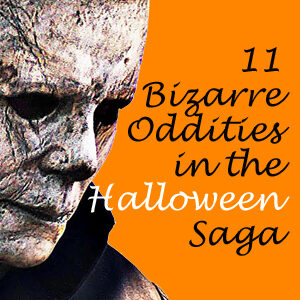“The Mousetrap and Other Stories” (1950) kicks off with a trivia answer: The title novella is the only Agatha Christie story not published in the U.K. This is because Christie reworked it into a play soon after writing it in 1948 and asked that the story not be published as long as the play was running.
However, it was published in the U.S. in this book, along with a hodgepodge of eight previously uncollected shorts from magazines. Similar to “The Regatta Mystery,” this book functions as a Christie sampler, giving us four Marples, three Poirots and a Mr. Quin.
The source of the play
I’m guessing “The Mousetrap” stands as a well-known Christie work because it’s a successful play, not because it’s a noteworthy piece of plotting. This 75-pager certainly held my attention, but it’s basic.

“The Mousetrap and Other Stories” (1950)
Also published as: “Three Blind Mice and Other Stories”
Genre: Mystery novella and short stories
Characters: Miss Marple, Hercule Poirot, Harley Quin
Settings: England, 1920s-40s
The formula is tried and true: Six people are at an isolated location when a constable visits, announcing that one of them is a murderer. The author’s attempt to tie in the creepy children’s song “Three Blind Mice” feels forced. Also, the twist ending was used in a previous book.
The best part of “The Mousetrap” is the mood, as it takes place at a remote inn during a snowstorm. Borrowing a trick from “The Sittaford Mystery,” the constable gets there via cross-country skis. I can imagine the winter wind sound effects coming through theater speakers. Surprisingly, no English-language film or TV adaptation has been made.
A lost Quin yarn revived
Fans of Mr. Satterthwaite and Harley Quin will be interested in “The Love Detectives” (1926), which was published in the same time frame as the other “Mysterious Mr. Quin” stories but not collected in that 1930 book. It closes out this collection.
After a manor lord is found dead, the suspects are arrayed and false confessions fly, it’s easy to figure out whodunit. Maybe it was considered the weakest link among the Quin yarns and therefore left out of the previous collection. But I nonetheless had fun with it.
The Marples
While the bookending chapters have the most talking points, the book’s heart is the four Marples from 1942-44. As is disturbingly common, innocent people would hang for murder if not for Miss Marple figuring out what really happened in some of these mysteries.
The cutest is “The Case of the Caretaker” (1942), where Marple’s doctor writes out a puzzler – from his own experience – to solve as a way for her to feel better. “Strange Jest” (1944) is the most engrossing, as Marple scours a house to crack a code of where a deceased man’s treasure lies.

Another story hinges on a prosthetic facial disguise. I’m now accustomed to this Christie trope, and I accept it to some degree. But I’d like to point out that it’s the least realistic trick in her playbook – especially when the trickster aims to fool people in his/her life.
The Poirots
This collection goes back to the 1920s to dig up two previously uncollected Poirots, both of which are a lot of fun.
In “The Adventure of Johnnie Waverly” (1923), Christie uses the kidnapping-and-ransom formula but adds oddities, notably advance warnings by the culprits. A reader will have a fair chance to solve this one, yet it’s not beneath Poirot. He serves as sort of a lecturer, with Hastings standing in for the audience.
“The Third Floor Flat” (1929) is rather amusing because a murder happens in Poirot’s building. It’s fun to see him interact with two young couples who are awed by his fame.
We learn that Poirot rents his apartment under a false name, as apparently his fame would lead to an overwhelming number of visitors. I’m not sure if this jibes with other stories. It might’ve been entertaining if the young people did not know the famous and falsely modest Poirot, if only to see his reaction.
The freshest Poirot entry, “Four and Twenty Blackbirds” (1941), hinges on a trope that likely wouldn’t fly in reality, but it’s a gripping tale overall. Poirot’s bookending restaurant conversations with a friend set a mood. I like Poirot’s recognition of how a person might fall back on routine behavior – rather than act out of character – in a tense situation.
“The Mousetrap” is the longest story and it holds the title slot, but fans will likely treasure this collection most for what’s comfortingly familiar – Marple and Poirot.
Every week, Sleuthing Sunday reviews an Agatha Christie book or adaptation. Click here to visit our Agatha Christie Zone.

